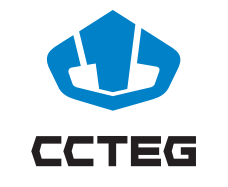In today’s digital age, energy management is becoming increasingly important. With the rise of smart technology, smart meters have emerged as a pivotal tool for both consumers and energy providers. This article aims to explore the intricate details of smart meters, their benefits, installation process, and how they contribute to energy efficiency.
What is a Smart Meter?
A smart meter, often referred to as an advanced meter or ‘type 4’ meter, is a digital device that accurately measures energy usage in real-time. Unlike traditional meters, smart meters automatically send this data to your energy retailer, eliminating the need for manual readings. According to the Australian Energy Regulator, these devices can remotely switch electricity on and off, measure power quality, and notify distributors of power outages (source).
Benefits of Smart Meters
Smart meters offer numerous advantages that make them a valuable addition to any home or business. Here are some key benefits:
-
Enhanced Control Over Energy Bills: Smart meters provide detailed insights into energy consumption, allowing consumers to make informed decisions about their usage. This can help in identifying peak usage times and adjusting habits to save on energy costs.
-
Access to Advanced Services: With a smart meter, consumers can access a range of services, including battery storage options and energy management apps. These services can help in optimizing energy usage and reducing costs.
-
Improved Outage Management: Energy providers can detect and address outages more quickly with smart meters. This leads to fewer disruptions and improved service reliability.
-
Environmentally Friendly: By promoting energy efficiency, smart meters contribute to reducing carbon footprints, aligning with global sustainability goals.
How to Get a Smart Meter
Obtaining a smart meter is a straightforward process. If your current meter is faulty or nearing the end of its life, your energy retailer will likely offer to replace it with a smart meter. Additionally, if you’re interested in the benefits of a smart meter, you can contact your retailer to explore available options in your area. The Australian government’s “Energy Made Easy” website is an excellent resource for comparing electricity offers (source).
Installation Process
The installation of a smart meter involves a few key steps to ensure a smooth transition from your old meter:
-
Scheduling the Installation: Your energy provider will contact you to arrange a convenient time for installation. It’s important to ensure that someone over the age of 18 is present during the installation.
-
Preparing for Installation: Clear any obstacles around your current meter to provide easy access for the installation engineer.
-
Installation Day: The engineer will conduct a visual inspection of your appliances, take a final reading from your old meter, and then proceed with the installation. The process typically involves a short power interruption of about 30-60 minutes.
-
Post-Installation: After installation, the engineer will test the smart meter and provide guidance on how to use it effectively.
Addressing Common Concerns
Safety and Privacy
A common concern regarding smart meters is their safety. Rest assured, smart meters are manufactured and installed according to stringent Australian standards. They comply with electromagnetic exposure limits set by the Australian Radiation Protection and Nuclear Safety Agency (ARPANSA), similar to everyday devices like mobile phones and WiFi routers (source).
Cost Implications
The cost of smart meters varies depending on the retailer’s approach. Some retailers may charge a lump sum, while others incorporate the cost into monthly bills. It’s advisable to inquire about costs upfront and compare offers from different retailers to ensure you’re getting the best deal.
The Future of Energy Management: Power of Choice Reforms
The “Power of Choice” reforms in Australia aim to provide consumers with more control over their energy usage. These reforms encourage the competitive deployment of smart meters, allowing consumers to access a wider range of services and pricing options. As part of these reforms, smart meters are expected to play a crucial role in demand management and energy efficiency (source).
Case Study: Matthew and Declan’s Solar Power Journey
Matthew and Declan’s decision to invest in solar panels was complemented by the installation of a smart meter. This allowed them to maximize the use of their generated solar power, leading to significant savings on their energy bills. Their experience highlights the synergy between renewable energy sources and smart meter technology (source).
Conclusion
Smart meters represent a significant advancement in energy management, offering consumers greater control, efficiency, and access to innovative services. As the world moves towards sustainable energy solutions, smart meters will undoubtedly play a pivotal role in shaping the future of energy consumption.










